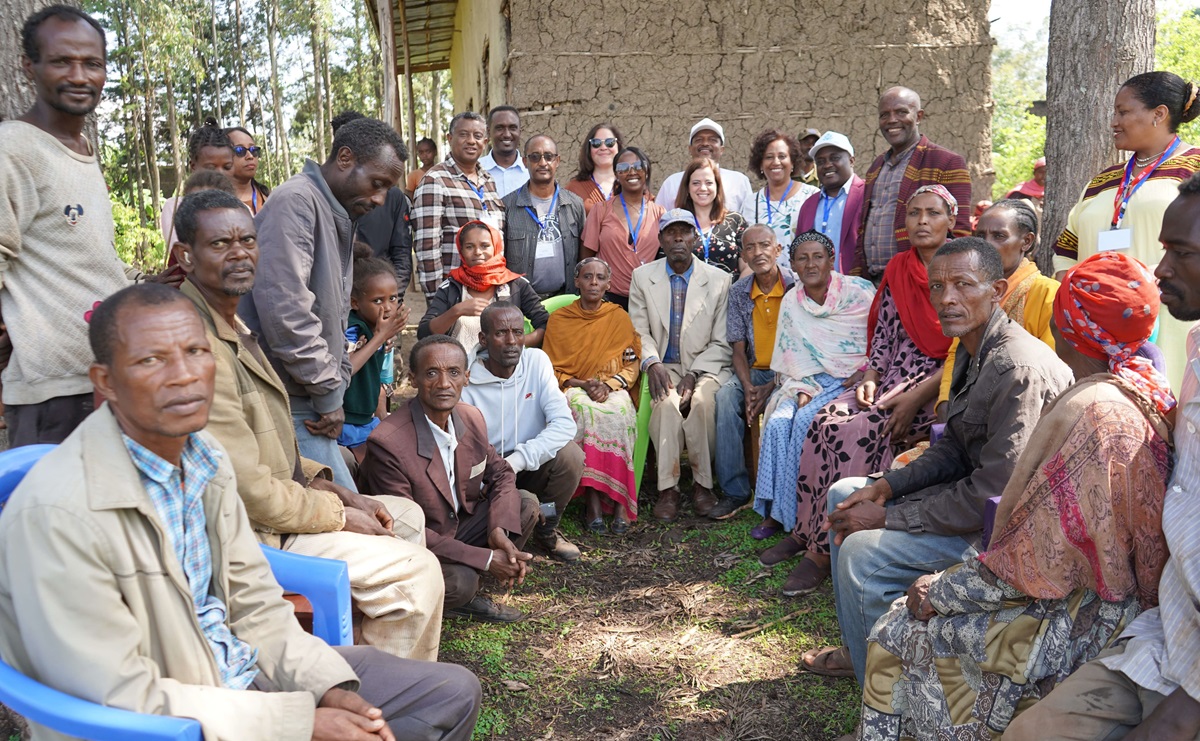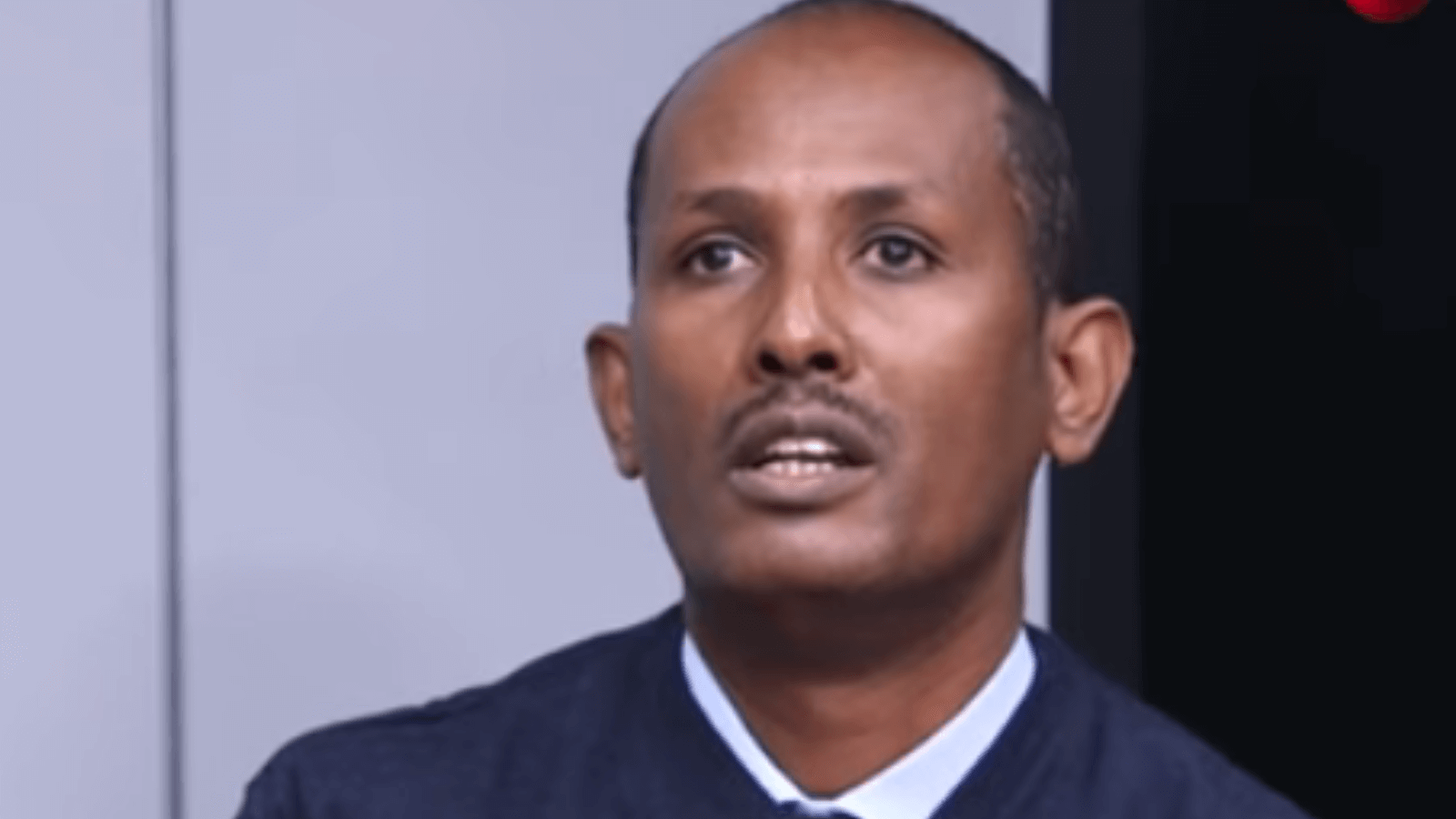
Getahun Tsegaye @GetahunTsegay12
Addis Abeba: The Ethiopian Citizens for Social Justice (EZEMA) Party said that the decision to delimit the administrative boundaries between Addis Abeba city and the Oromia Special Zone Surrounding Finnfine is a “big mistake” and also called it an “attempt to forcefully impose” whereby the disadvantage would outweigh the advantages.
Following the emergency meeting of the party’s National Executive Committee today, it issued a statement denouncing the administrative boundary work and said it is an untimely decision. In the same meeting, the Executive Committee stated that it understood that the Addis Ababa City Administration and the Oromia Special Zone Surrounding Finnfine had reached an agreement to demarcate the administrative boundaries.
“Bottom-up” approach should have been implemented to delineate the administrative boundary boundaries between Addis Abeba city and Oromia region, a confidential, high-ranking official working at the Ministry of Justice told Addis Standard.
Speaking on the condition of anonymity for fear of reprisal, he stated that the administrative boundary decision has been set by top governmental bodies and was delivered to the bottom instead of what was supposed to be the inverse. According to him, the public should have been the prime target of the decision, and discussion should have commenced from them. “It is absolutely wrong to pass such a grand decision while neglecting the residents who are directly affected by it,” adding, “discussions have been held among Addis Abeba City Administration, Oromia Special Zone Surrounding Finnfine, and higher officials at the federal level,” he said.
Indicating the importance of demarcating administrative boundaries to handle the problems on the ground, EZEMA underlined that the residents in the said areas should get involved and be the owners of the process. The people living in the areas affected by the decisions are “obliged to accept the government’s decisions; as a citizen, it should be known that the right to know and participate in the process should be respected,” the party stressed.
Reinforcing this, the unnamed government official, who spoke with Addis Standard stated that despite some consensus, even among the said officials, the full agreement has not arrived yet. “There should be divisions of wealth and property, including condominiums built by both the city administration and the Oromia region surrounding Addis Abeba have been, among others, the major issues we, the leaders, had heated debate on the how part of the implementation.” He added.
He further expressed that the government officials from the said areas of Addis Abeba and Oromia Special Zone Surrounding Finnfine will hold discussions with the residents that will be affected by the decisions. “Taking into account that Addis Abeba is the capital and the seat for the African Union, I am afraid residents of the city who will be delineated under the Special Zone will not be happy. The same holds true for residents of the Special Zone who have built their own unique lifestyle and who are forced to be administered under the city administration,” he speculated the tension.
In this regard, a state-sponsored local broadcasting media interviewed some residents affected by the decision. Zewdu Megera, a resident of Lemi Kura Sub-City told this media outlet that they have consistently been asking both the city administration and the Oromia Special Zone Surrounding Finnfine to clearly delimit the administrative boundaries, either by using bridges or such signs.
” They both have been giving us controversial replies when it comes to the boundaries and we would have been able to know who to ask had they delimited the boundaries clearly,” he added. Another interviewee, raising the same concerns, stated that when she was seeking services, the city administration and the Oromia Special Zone Surrounding Finnfine had discrepancies.
Hordofa Demissie, another resident in Lemi Kura, has expressed his concern regarding the matter. “I have neither been accepted by Bole Sub-city nor by Oromia region when I demanded services, including fertilizers, both said I don’t belong in any of the domains,” he complained.
EZEMA’s announcement comes in the backdrop of the decision made that the boundary delimitation will be executed between all the districts around Addis Abeba and the Oromia Special Zone Surrounding Finnfine. Quoting some unspecified ‘trusted sources’ from Addis Abeba City Administration, local radio reported that on Tuesday, 09 August, detailed instructions have been sent to the ruling party [Prosperity Party] member organizations, and respective woreda and sub-city officials regarding the how part of the implementations. Government officials of the woredas and sub-cities have been instructed to hold talks with residents who will be affected by the decision.
Reports are resurfacing that a designated team that conducted a study using natural and man-made signs to separate the two administrations held discussions with the said area leaders from Oromia and the city’s administration on the matter.
EZEMA party, however, sees the matter cautiously. It pointed out that among others, one of the issues it expected to be resolved under the auspices of the National Dialogue in Ethiopia, is “administrative demarcation”. It, however, criticized the said administrative boundary work and the recent “cluster” organization decisions in the SNNP region. “Such decisions do not take into account the serious problems the country is currently facing,” the statement read.
Recently the residents in Wolkite city, the capital of Gurage zone in the Southern Nations, Nationalities and People’s (SNNP) regional state, staged protests by boycotting routine activities including civil service works and business activities in opposition to the ongoing cluster restructuring of new regional states in SNNP.
This follows in the footsteps of the submission on 04 August by Kiflu Wanna, Deputy Speaker of the SNNP regional state Council, to the House of Federation (HoF) a cluster of ten zones and six woredas in the region requesting to be restructured in two additional regional states out of the existing SNNP region. The respective Councils of zones and Special Woredas approved the request over the weekend of 31 July.
The new restructuring will merge a total of 16 zones and special woredas in the SNNP region into two additional regional states. Accordingly, the six zones: Gamo, Gedeo, Gofa, Konso, South Omo, and Wolayta zones, as well as the five Special Woredas: Ale, Amaro, Burji, Basketo, Derashe Special Woredas will form one regional state after the HoF approved the request. Similarly, four zones: Hadiya, Halaba, Kembata Tembaro and Silte zones, and Yem Special Woreda will be organized in one regional state. Kiflu has asked the HoF to respond to the requests “immediately based on the constitution.”
The party said that it did not gauge the issue in a subtle manner as ‘Who got what? Who lost what? Stating its assessment of the decision as “highly flawed in terms of relevance and timeliness,” it called on the government to reconsider the matter quickly.
The party announced that the details of the boundary demarcation agreement that was reached between the Addis Ababa city administration and the Oromia regional government will be “thoroughly checked” in the future. Neither the Addis Abeba city administration nor the Oromia Special Zone Surrounding Finnfine has released any official information regarding the demarcation agreement. AS







